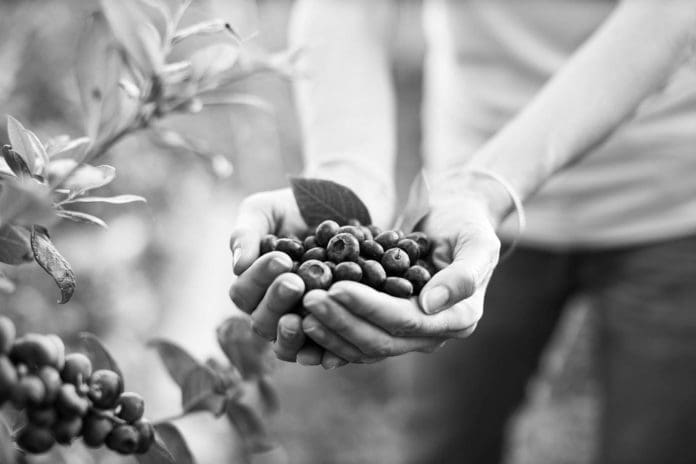By Rosella Stewart
Just as expected, blueberry season has settled into the hearts and yards of North Shore locals yet again. Blueberries begin ripening around the middle of July in Minnesota and reach their bluest and juiciest by early August, allowing for one last grand summer hurrah with a berry feast. Blueberry season can be quite the exciting fiasco for some locals, whose recipes and traditions can only be celebrated once the fruit is in abundance. With this summer being one of the hottest the midwest has ever recorded, there were many questioning how the June heat would affect the quality and survivability of the blueberries along the North Shore.
Blueberries cannot thrive in direct, unrelenting sunlight and heat. While higher temperatures can aid in longer growing seasons for the fruit, blueberries are not adapted to the intensity of the sunlight without some shade, so most berries growing at the top of their bushes will get an extreme sort of plant sunburn, in which the skin shrivels up and the juice inside dries up. In these extreme scenarios, over half of the produce can be lost. With the top half of every blueberry bush in excessive direct sun, it will likely die before ripening.
Many locals have expressed some relief over the fact that this year’s blueberry yield already seems to be doing much better than the summer of 2022. The fruit is firmer, juicier, and overall healthier than the sunburnt berries last season had to offer. Although still weaker than the blueberry seasons the North Shore has had in the past, bakers and fruit fanatics alike will not have their berry dreams dashed this season around.
Blueberries have been growing in North America for over thirteen thousand years. The exact period of time in which humans began consuming blueberries is unknown, but we do know that blueberries were one of the first edible fruits introduced and used by the human race after the most recent ice age. Fruits like blueberries were monumental in establishing the state of humanity as we have it today, offering food that could ensure its return in warmer months and survive the winters in small quantities. Ancient indigenous peoples across North America used these early blueberries in various medicines and meals, fruit and leaves alike.
The blueberry is one of the easiest fruits to keep stored, due to the small size of the berries (wild blueberries are much smaller than the blueberries sold in grocery stores) and their chemical makeup. Due to this, the blueberry remained a well known and well respected part of the evolution of the culture of food in the midwest across time, and is still being honored today. Many indigenous groups across the country even refer lovingly to blueberries as “star berries” throughout history, as they were believed to be sent from the stars to save children from starving during the wintertime.
Blueberries began being used in stews as the meals humans created became more and more complex over the course of history. The first blueberry baked good ever created was called sautauthig (sawi-taw-teeg), and consisted of dried mashed blueberries mixed with cracked corn and water. This meal was given to the pilgrims when they arrived in North America, utterly clueless on how to find food and survive the winter, and was the sole source of nutrition and generally the only reason the pilgrims made it through that first winter.
Blueberries have found their way into so many crucial moments across human history. It is the berry that led our meat-eating ancestors into an evolved, omnivorous species, and their growth across the midwest each summer stands as a reminder of how food shapes the world and whether or not we are able to survive it. Their fruit stand as results of the ice age that reformed the Earth’s surface into something viable for human life.
No farewell to the summer months can be complete without some sort of fresh blueberry meal! Try adding blueberries to pancake mix, to top salads or even ice cream, or assemble a smoothie or a fruit bowl. Blueberries are extremely versatile, and the sweetness and tartness pair well with many variations of flavor. Baking with blueberries is always fun, due to the rich indigo color the berries produce when mixed. Blueberry muffins and pie are some of the North Shore’s favorites, but trying out various indigenous blueberry recipes can be a fun way to connect to the history of the fruit. Wojapi is a blueberry-based sauce similar to jam that pairs well with a number of desserts, and works excellently drizzled over toast or yogurt to add flavor.
If you’ve prepared any special blueberry masterpieces this summer, email a photo to northshorejournal@gmail.com (for publication in a future issue) to share what the community came up with this season.



